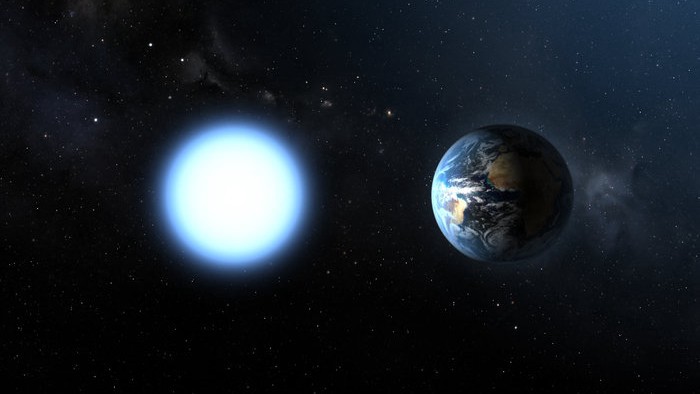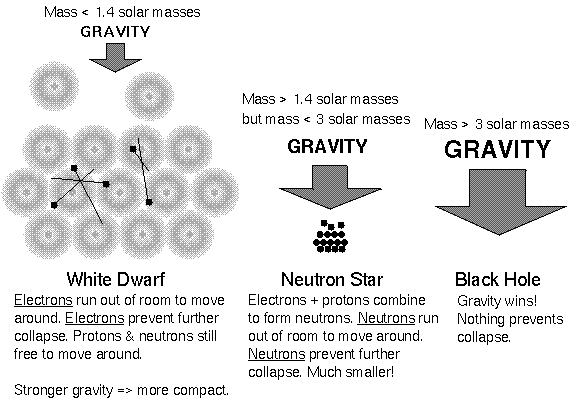The Chandrasekhar Limit is an upper limit on the mass of white dwarves, a type of star. A white dwarf star with a mass greater than this cannot exist stably and undergoes changes to other forms. This limit is equal to around 1.4 times the mass of the sun.
This limit was derived by Subrahmanyan Chandrasekhar, a Nobel Prize-winning Indian-American astrophysicist. The proof of this limit was an important step in astrophysics, as it provided more evidence in favor of some of the strangest phenomena of astrophysics.
Origins of the Limit
The Chandrasekhar limit is applicable to a specific kind of stars, called white dwarfs. They are very dense stellar objects, formed by the end of the life cycle of bigger stars. Due to their gravitational pull, they keep shrinking and getting smaller.

Opposing the gravitational shrinking effect is the electron degeneracy pressure. This pressure exists because of quantum mechanical effects. A rule in quantum mechanics, Pauli’s exclusion principle, states that two or more electrons (or particles called fermions in general) cannot occupy the same quantum state.
As the star shrinks, electrons get closer and closer. They are forced to gain kinetic energy because otherwise, they would occupy the same quantum state. This increased energy is observed as pressure, called “electron degeneracy pressure”.
The Chandrasekhar Limit is the mass limit up to where electron degeneracy pressure can resist the gravitational pull. If a white dwarf has less mass than the limit, it can exist stably. If not, it undergoes changes to other forms of stellar remnants.
This limit of mass is around 1.4 times the mass of the Sun.
What if the White Dwarf is Heavier?
If the white dwarf is heavier than 1.4 solar masses, several things could happen.

For low mass stars, the possible route is a neutron star. They are formed by electrons fusing with the protons in the star, giving rise to many neutrons. They resist the force of gravity by neutron degeneracy pressure, a phenomenon similar in origin to electron degeneracy pressure. This process involves the release of immense amounts of energy, in the form of a supernova. Some supernovae do not leave any form of neutron stars behind.
For heavier stars, the outcome is likely a black hole. Black holes are objects so dense that their gravitational pull is incredibly strong. Even light cannot escape them. They are formed when the heavy dwarf collapses so far by gravity, no repulsion can slow it down or stop it.
Historical Background
Chandrasekhar derived his limit in the early 1930s. His work improved on the work of other physicists. The concept of a mass limit for white dwarves was suggested by Edmund Clifton and Wilhelm Anderson, who worked on non-relativistic and relativistic cases of the problem, respectively. Both of them had extended the concept of a Fermi gas, a concept applied to understand white dwarves.
Chandrasekhar, in part of his derivation, worked with the hydrostatic equation, applying it to the Fermi gas and revising his calculations, arriving at the value of 1.4 times the mass of the Sun.
Sadly, the contemporary physics community at that time did not give their work the recognition it deserved. It is because most scientists then believed that propositions like neutron stars and black holes were too unphysical and impossible. It was only when evidence for such bodies began turning up in the 1960s was the idea taken seriously.

